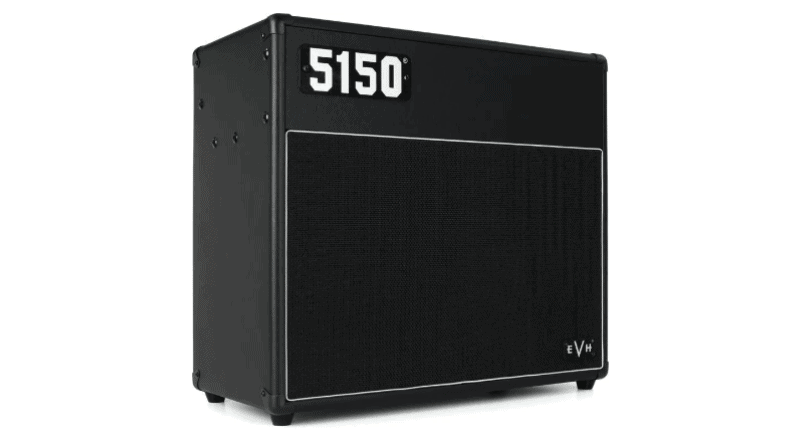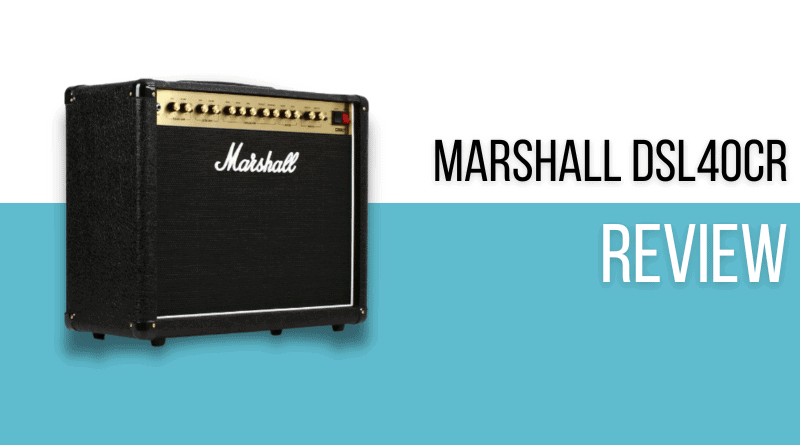Marshall is one of those brands that really needs no introduction – they are to music as Ford is to cars, as New York is to skyscrapers, as vanilla is to ice cream… You get the picture. Their amps have been powering rock and roll ever since their “Number One” was released back in 1962.
While Marshall has become best known for their Plexi and JCM800 models, two iconic amps of very different eras, it’s one of their more contemporary models that has become the go to for the modern player – the Dual Super Lead, or DSL. The DSL Series is both affordable and powerful and has put iconic Marshall tube tones in the hands of countless players who might otherwise not have gotten the chance.
One of our favorite models from this line is the Marshall DSL40CR, a fantastic rig that we named our Top Pick in our roundup of the best combo amps for metal, as well as the test amp for many of our other roundups. It has tons to offer for a broad range of players, so keep on reading this KillerGuitarRigs Review to find out more about this brilliant amp.
Contents
Who is This For?
The Marshall DSL40CR is a fantastic choice for just about any level of player. It may be priced with intermediate and above players in mind, but it’s one of the easiest amps to get metal tones out of. Surprisingly for a Marshall, it does cleans remarkably well, which means pedal users will have an easy time finding their sound, and of course, with the gain cranked, it’ll break up and chug away quite nicely all on its own.
Working musicians will appreciate the build quality and reliability, as well as the speaker emulated line out for great tone when going directly into front of house setups.
Appearance / Features / Controls
There was nothing particularly flashy about the DSL40CR. It looked like just about every Marshall amp of the last 40 years or so. The primary construction was MDF, and while this isn’t seen as a premium wood, in reality, it’s one of the most durable cabinet construction materials around, which is exactly what working musicians need. The cab was wrapped in classic black Tolex, and all eight corners featured protectors – another feature that hints towards this amp’s chops as a live performance rig.
The cab had an open back, and as for the speaker, it was fitted with a 12” Celestion V Type, which is, in our opinion, the perfect choice for this amp.
It had the classic gold face plate with an absolute plethora of controls. Being a DSL model, it had two channels, Classic Gain with clean and crunch options and Ultra Gain with OD1 and OD2 – the extra modes really make it feel like it’s a four channel amp. There was a 3 band EQ section, with a tone shift button and presence and resonance controls, too.
Further to the right, there were individual reverb and master volume controls for each channel, and an output switch, which allowed us to attenuate between the full 40 watts or 20 watts.
In the engine room, the DSL40CR had 4 x ECC83 preamp tubes and 2 x EL34 power tubes. This is a classic Marshall setup, and as you’ll learn in the next section, it didn’t disappoint.
As expected, it also came with a two button footswitch.
Performance / Sound
Our first impressions of the DSL40CR were excellent. This may not be a flagship model, but it’s clear that the fit and finish were excellent, and as cliche as it sounds, it was genuinely built like a tank. Of course, all of this rock solid goodness comes at a bit of a cost, and in this case – it was weight. At 50.4 lb, this isn’t the most portable unit, but as long as you’re not trying to take it on public transport, you’ll be ok.
Getting to the tones, we found this to be one of the most versatile Marshall amps we’ve ever tested. If you’re a KGR regular, you might recall we included this amp in our roundup of the best clean amps – it didn’t take a top spot there, but just to make it to the top 7 is a huge achievement for a brand not exactly famous for headroom.
We thought that the cleans were really fantastic. Of course, no one is going to swap their Roland Jazz Chorus or Fender Princeton for a DSL40CR, but to even be mentioned in the same breath, Marshall did something right. We ran some overdrive, fuzz, and distortion pedals through the amp in the Classic Gain channel with “Clean” selected, kept the gain down, and dimed the master volume, and the results were fantastic. We got all of the authentic character of the pedals with very little coloration, and we were able to dial in incredibly accurate levels of distortion
Over in Ultra Gain, with the gain maxed out, we got some extremely satisfying, saturated tones. It was able to chug away quite happily without the aid of any pedals, with a pretty aggressive bite, too. It allowed for good note separation and didn’t ever feel washed out.
We loved that it featured an attenuator and dedicated gain and master volume controls. We were able to get the full benefit of the saturated tubes at pretty much any volume thanks to this, again, without the aid of pedals, and when we wanted to let loose in 40 watt mode, we still found that we were in full control of both the tone and volume – this is really helpful for anybody gigging at different sized venues.
It featured digital reverb rather than real springs, but at the end of the day, it all helps with durability, and when you’re pushing the tubes hard for maximum distortion, we’d challenge anybody to tell us by ear whether we were using digital reverb or analog.
Other Metal Amps to Consider
The Marshall DSL40CR is practically the perfect amp for metal, especially if you’re still trying to keep the price point reasonable. Having said that, there are still some great alternatives offering similar performance at around the same price. We’ve picked a couple of our favorites below.
Orange Rocker 32

Marshall may be the name in British amplification, but hot on their heels is another iconic brand, Orange, and the Orange Rocker 32 is an amp that came to play. It’s slightly less powerful than the Marshall at 30 watts (all tube), but it makes up for that with its 2 x 10” speaker setup. The 10” speakers give it a tight, focused tone and also allow for true stereo sound. It can definitely chug all on its own, but this amp was purpose built as a pedal platform, so if that’s how you get your distortion, you’ll love this amp.
EVH 5150 Iconic Series 40

The EVH 5150 Iconic Series 40 watt tube amp delivers more of an American sound thanks to its 12AX7 preamp tubes and 6L6 power tubes, but that doesn’t mean it can’t scream. Particularly in its “Red Channel” it delivers searing high gain tones with superb clarity, particularly with the Burn setting engaged. It’s voiced to match Van Halen’s more contemporary tones, and it really does a fantastic job. If you want the Brown Sound, then there’s no better way to get it than with an EVH.
Final Thoughts on the Marshall DSL40CR
It should be pretty obvious from the review body that we absolutely loved the Marshall DSL40CR. We think it performed well above its price point, which might we say is extremely reasonable for what is a true workhorse amp.
It did cleans well, and of course, it gave us great distortion. Best of all, it was predictable. Unlike the Marshall Origins Series, which we really had to work to get the best out of, we were intuitively able to just set the amp, and we got exactly what we expected.
Whether you want it for gigging, recording, or even just practice, you can’t do much better than this without spending a lot more.


